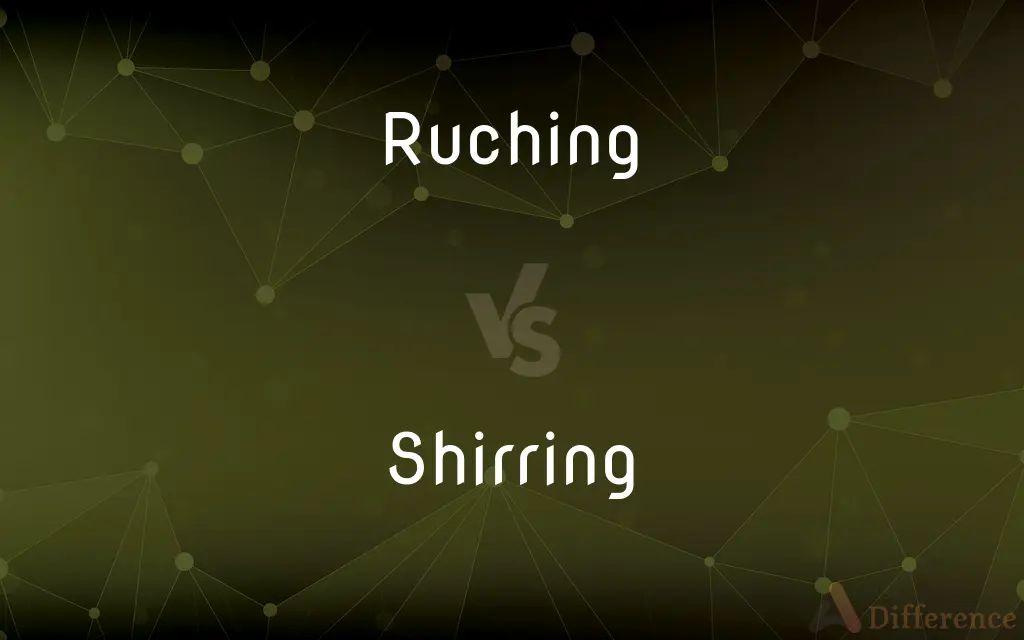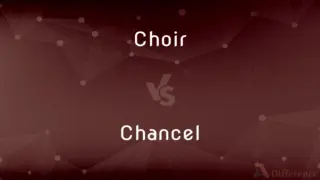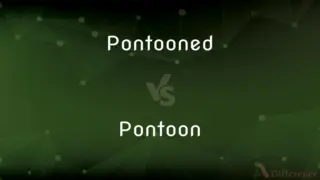Ruching vs. Shirring — What's the Difference?
By Maham Liaqat & Urooj Arif — Updated on May 7, 2024
Ruching is a sewing technique that creates decorative folds or pleats, while shirring involves stitching elastic threads to gather fabric into stretchy pleats.

Difference Between Ruching and Shirring
Table of Contents
ADVERTISEMENT
Key Differences
Ruching uses gathering or pleating techniques to create decorative folds across fabric, often for visual interest or texture. Shirring, on the other hand, employs elastic thread to gather fabric into stretchy, uniform pleats, giving it an expandable and fitted quality.
Ruching is primarily decorative, used to embellish garments like dresses or curtains. Shirring is functional, providing a stretchy fit in waistbands or bodices while also being visually appealing.
Ruching involves manually creating folds, which can be uniform or asymmetrical depending on the design. Shirring achieves a more consistent look due to the even spacing created by elastic stitching.
Ruching is typically achieved with non-stretch fabric, whereas shirring works well with lightweight materials to create flexibility.
Comparison Chart
Technique
Folding or pleating fabric
Stitching elastic thread for gathered effect
ADVERTISEMENT
Function
Decorative, adds texture
Functional and decorative, creates stretch
Appearance
Varied, can be uniform or asymmetrical
Uniform, elastic pleats
Fabric Type
Typically non-stretch
Lightweight, often with some stretch
Usage
Dresses, drapes, accessories
Waistbands, bodices, and children’s clothes
Compare with Definitions
Ruching
A sewing method producing volume or fullness in fabric.
Ruching was used to create ruffled sleeves on the blouse.
Shirring
A sewing technique using elastic thread to create gathered pleats.
Shirring along the waistband gave the skirt a stretchy fit.
Ruching
A technique creating decorative folds or pleats in fabric.
The dress's bodice featured intricate ruching for added elegance.
Shirring
A method of sewing that results in flexible, stretchable pleats.
The bodice's shirring allowed for a more comfortable fit.
Ruching
A series of gathered pleats sewn into garments for a textural effect.
Ruching along the skirt gave the outfit a vintage appeal.
Shirring
The process of gathering fabric using parallel rows of elastic stitching.
Shirring was employed to create a fitted look on the dress.
Ruching
Decorative folds achieved through sewing or gathering techniques.
The pillows were trimmed with ruching along the edges.
Shirring
Elasticized pleating that stretches for adjustable wearability.
Shirring at the waist allowed the dress to fit various sizes.
Ruching
An ornamental feature adding dimension to clothing or accessories.
The scarf's ruching made it a statement piece.
Shirring
Uniform pleats achieved by sewing with elastic thread.
The child's dress had shirring around the neckline.
Ruching
A piece of material or a part of an article of clothing that has been ruched.
Shirring
In sewing, shirring is two or more rows of gathers that are used to decorate parts of garments, usually the sleeves, bodice or yoke. The term is also sometimes used to refer to the pleats seen in stage curtains.
Ruching
Ruche.
Shirring
To gather (cloth) into decorative rows by parallel stitching.
Ruching
A strip of fabric to be ruched.
Shirring
To cook (raw eggs removed from the shell) by baking.
Ruching
Present participle of ruche
Shirring
Two or more rows of gathers used to decorate parts of garments, usually the sleeves, bodice and yoke.
Ruching
A ruche, or ruches collectively.
Shirring
Present participle of shirr
Shirring
Present participle of shir
Shirring
Baking shelled eggs
Common Curiosities
Is shirring primarily decorative or functional?
Shirring is both decorative and functional, providing stretch while also adding visual appeal.
Does shirring work well on heavy fabrics?
No, shirring is more effective on lightweight fabrics that can be gathered easily.
Is it possible to incorporate both ruching and shirring in one garment?
Yes, both techniques can be combined to enhance the fit and style of clothing.
Can ruching be used with elastic thread?
Ruching typically doesn't use elastic thread; it relies on regular gathering or pleating.
What is the main purpose of ruching in fashion?
Ruching is used for decorative purposes, adding texture or volume to garments.
How many rows of stitching are typical in shirring?
Shirring usually requires multiple parallel rows to achieve even gathering.
Can shirring be adjusted for a tighter or looser fit?
Yes, shirring is flexible and can expand or contract to fit different sizes.
How does the fabric type differ between ruching and shirring?
Ruching usually works with non-stretch fabrics, while shirring is better suited to lightweight, stretchy materials.
What distinguishes the appearance of ruching from shirring?
Ruching creates varied, ornamental folds, while shirring results in consistent, elasticized pleats.
Is ruching suitable for making garments stretchable?
No, ruching adds decorative texture but does not provide stretch like shirring.
Is ruching more time-consuming to create than shirring?
Yes, ruching can require more manual adjustments and precision.
Is ruching or shirring more common in children's clothing?
Shirring is more common due to its stretchy fit.
Do both ruching and shirring provide volume to a garment?
Yes, both techniques can add volume, though shirring also provides stretch.
Are both techniques suitable for all clothing styles?
Not all styles benefit equally from these techniques; ruching is more decorative, while shirring suits practical, fitted designs.
Which technique, ruching or shirring, is better for a fitted silhouette?
Shirring is better for fitted silhouettes due to its elastic qualities.
Share Your Discovery

Previous Comparison
Choir vs. Chancel
Next Comparison
Pontooned vs. PontoonAuthor Spotlight
Written by
Maham LiaqatCo-written by
Urooj ArifUrooj is a skilled content writer at Ask Difference, known for her exceptional ability to simplify complex topics into engaging and informative content. With a passion for research and a flair for clear, concise writing, she consistently delivers articles that resonate with our diverse audience.
















































